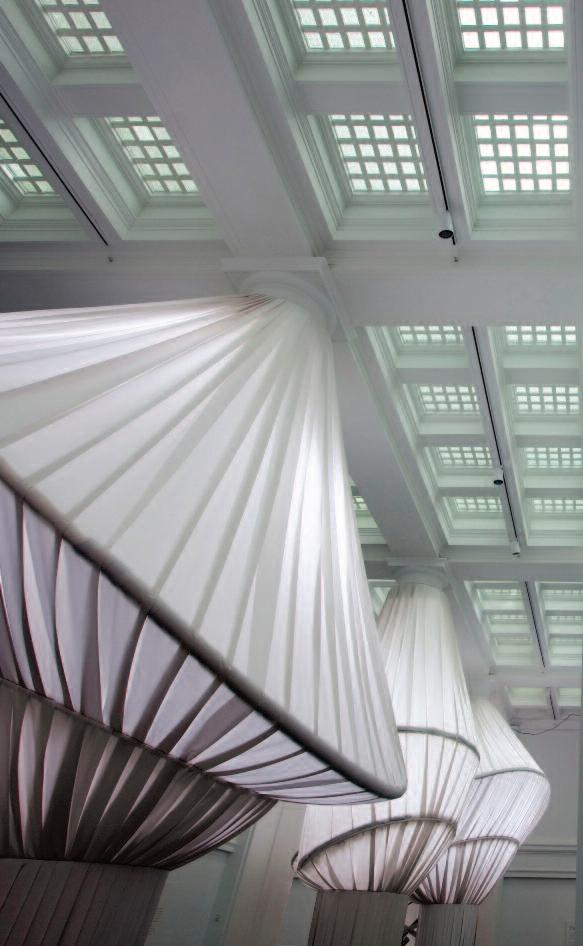
6 minute read
Sunbrella® fabrics transform
from Raven No. 13
brooklyn museum ‘great hall’
The “Great Hall,” a 10,000-square-foot colonnaded space on the first floor of the historic Brooklyn Museum, has been transformed by a cutting-edge architectural installation featuring 2,400 yards of Sunbrella® fabrics. Sixteen towering columns are enveloped with fabric stretched and pleated over wood and metal frames, resulting in an awe-inspiring experience.
Advertisement
“We enjoy hearing all of the different ways that visitors interpret the space,” said Aleksey Lukyanov-Cherny, a founding partner of Situ Studio, a Brooklyn-based creative practice that created the installation. “Our goal was to transform classical architectural elements – 25-foot columns –and give the space a new life and form.”
The Brooklyn Museum originated the installation, known as “reOrder,” as a way of inaugurating the first phase of reimagining the Great Hall as a central space for exhibits, performances and other museum activities. The museum is implementing an Ennead Architects-designed renovation of the Hall, which was built in the early twentieth century as a part of the original McKim, Mead & White architecture. Several design firms were invited to submit concepts for a Great Hall installation.
“We later found out that other proposals were of individual sculptures to be installed in the Great Hall; we focused instead on the architecture of the space and in particular the 16 classic columns to create a site-specific installation that transforms the overall environment of the space,” Lukyanov-Cherny said. “Throughout architectural history, columns have been ornamented, and we saw the opportunity to push this concept outside of traditional bounds in grand and unexpected ways.”
Situ Studio’s design consists of a series of stretched fabric canopies and integrated furnishings that augment the profiles of the monumental columns. The fabric structures vary in size and volume and are complemented by the installation of benches and tables at the bases made of acrylic solid-surface material. Lighting inside each column adds depth and texture, resulting in a surreal effect.
A defining element for the installation was fabric selection. Situ Studio reviewed a number of options before selecting Sunbrella fabrics.
“We had to have a fabric that was durable to withstand the construction process,” Lukyanov-Cherny said. “For the installation, the fabric had to be cut, creased and pressed, and if it got dirty it had to be easy to clean. Plus, the fabric had to have the ability to look good in a hightraffic, public space for an entire year.”

Sunbrella fabrics passed all of the performance requirements set by Situ Studio with the added benefit of excellent light diffusion and no harmful off-gases that could affect air quality inside the museum.
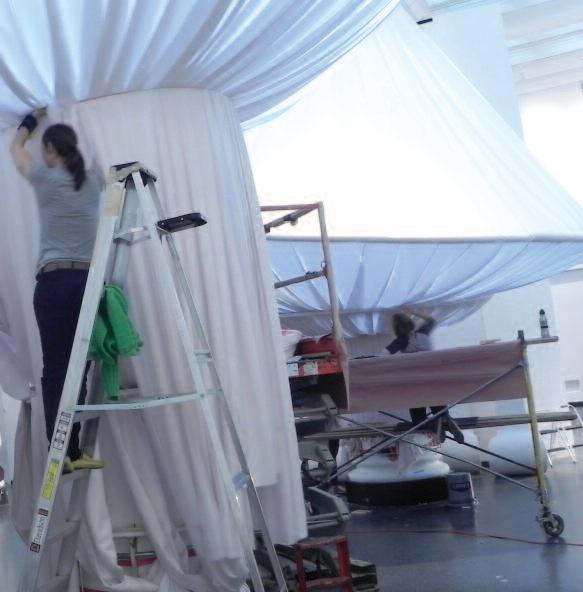
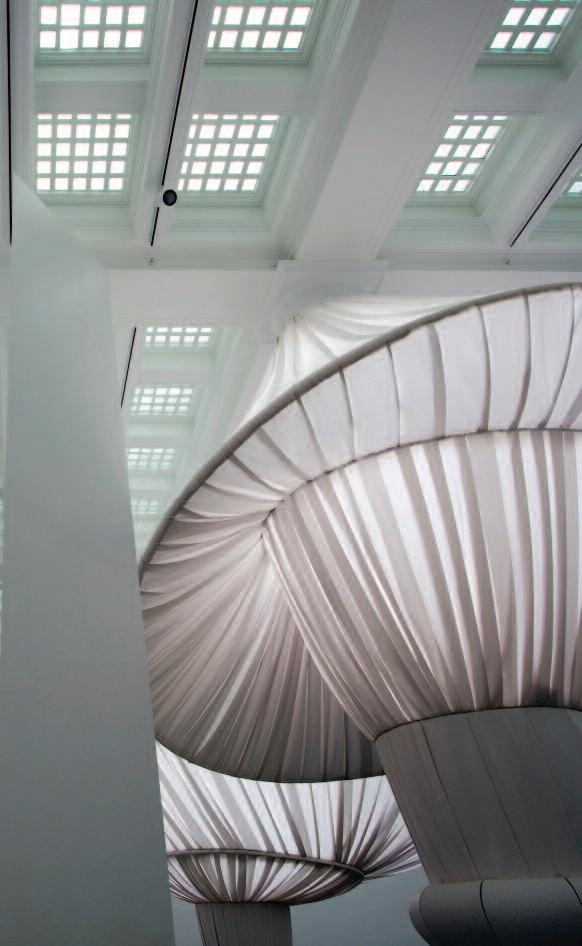
“The fabric was amazing to work with,” Lukyanov-Cherny said. “Sunbrella was easy to handle, easy to clean and durable. It folds and drapes beautifully and gave us just enough stiffness for the crisp lines we wanted. We were able to cut Sunbrella with a hot knife, which meant that we didn’t have to hem the cut edges, which was a tremendous time savings.”
Craftsmen worked intensely for two months, fabricating various components and planning how it would be installed. As a one-of-a-kind project, the team creating the installation developed customized approaches.
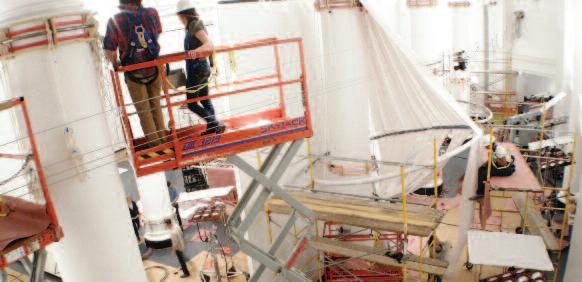
“The work became easier as we moved through the project,” Lukyanov-Cherny said. “We designed a system in which many parts were interchangeable, including the fabric itself. No specific patterning was needed because we could achieve the design we wanted through folding and pleating.”
Glen Raven Custom Fabrics donated Sunbrella fabrics for the Brooklyn Museum project because this unique installation is exposing thought leaders in design and architecture to an entirely new level of creative application for the brand. “reOrder” demonstrates dramatically the most important attributes of Sunbrella fabrics – beautify, adaptability, durability and environmental friendliness – to sophisticated and diverse audiences.
“Because this installation is so unexpected and so beautiful, it will have a lasting impression on anyone who visits the Museum, whether they are a design professional or a thoughtful consumer,” said Gina Wicker, design and creative director for Glen Raven Custom Fabrics. “We are continually searching out innovative uses for Sunbrella fabrics that can inspire and educate, and we could not have asked for a better partner than Situ Studio or a better platform than the Great Hall.”
The Great Hall installation will remain in place until January 15, 2012 at the Brooklyn Museum, 200 Eastern Parkway in Brooklyn. Sunbrella fabric used for the installation will be repurposed and suggestions for potential new applications can be submitted online at www.sunbrella.com/brooklyn.
CENTER, TOP The 16 columns in the Brooklyn Museum Great Hall have been transformed with structures made from Sunbrella® fabrics. CENTER, BOTTOM AND RIGHT, TOP Sunbrella fabrics were selected by Situ Studio for the Great Hall project for many reasons, including the fabric’s durability and ease of cleaning during fabrication and installation, along with excellent light diffusion and elegant draping qualities.
Burnsville Plant Setting Sights On Becoming ‘Landfill-Free’
The Blue Ridge Mountains are among North Carolina’s most important ecosystems, attracting millions of tourists each year for leaf watching in the fall, skiing in the winter and escape from the heat in spring and summer. The highest peak in the range, Mt. Mitchell, is located in North Carolina, along with portions of the Blue Ridge Parkway and Appalachian Trail.

North Carolina’s Blue Ridge Mountains are also home to descendants of the first settlers who arrived in the 17th century –fiercely independent people renowned for their creativity, work ethic and resilient spirits, capable of coping with the demanding natural terrain and weather. Within this environment is Glen Raven’s Burnsville Plant in Burnsville, N.C. – a weaving operation with an intensely loyal workforce where 20-plus year service records are the norm.
“You mention a need or an idea this afternoon and it will be done by tomorrow morning,” said Wendell Wilson, manager of the Glen Raven Technical Fabrics facility. “People here are highly innovative and extremely competitive by nature. Who can grow the most pounds of a crop per acre, who caught the biggest fish – there is a sense of pride and achievement both inside and outside of our plant.”
This competitive spirit has led Burnsville Plant into leadership positions in several markets – No. 1 in sailcloth and flag and banner fabrics in North America and cutting-edge performance fabrics for ballistic vests for the U.S. military and protective equipment for electric utility workers. It’s this mindset for achievement that is also driving the plant’s latest goal – to become a landfill-free manufacturing center this summer.
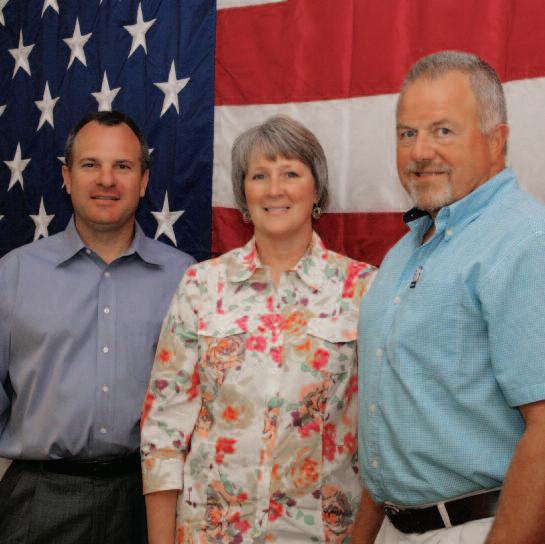
Recycling has been a key component of Burnsville Plant for decades, resulting in the majority of high-value waste materials being recycled. During a plant renovation in the late 1990s, a recovery and handling system for nylon and polyester fibers was put into place.
“Recycling has allowed Burnsville Plant to convert our waste management from cash-flow negative to cash-flow positive,” Wilson said. “An essential element was the associate-led system to segregate our nylon and polyester wastes, which increased the value of these materials more than 50 times.”
In addition to recycling nylon and polyester fibers, Burnsville recycles batteries, fluorescent tubes, clear plastics and cardboard. Wood pallets are repaired and reused multiple times and reuseable plastic crates are used for receipt of raw materials. Food waste from the plant cafeteria is collected by a local hog farmer to the delight of his livestock.
“When we assessed everything earlier this year, we realized that we are closer to landfill-free than we thought,” Wilson said. “There wasn’t much left to recycle.”
The remaining waste items, however, were the most difficult to recycle, including materials such as contaminated fibers and floor sweepings. It was at this point that Burnsville Plant called on assistance from its sister plant, the Anderson, S.C., Sunbrella ® fabrics manufacturing center, which has been landfill-free for three years.
“You reach a point in your recycling program when you need an outside partner who can further separate and process wastes so they don’t end up in a landfill,” said Randy Blackston, plant manager at Burnsville from 2003 until 2007 and currently vice president of operations for Glen Raven Custom Fabrics, which includes Anderson Plant.
Through additional separation and reprocessing steps, difficultto-recycle waste items can be used to create absorbent materials, such as those used to control the oil spill in the Gulf of Mexico. Other reprocessed materials can be used for filler in packaging and insulation. Anderson Plant has advanced to this step and Burnsville Plant will implement a similar approach.
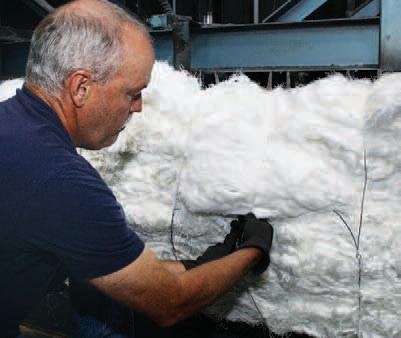
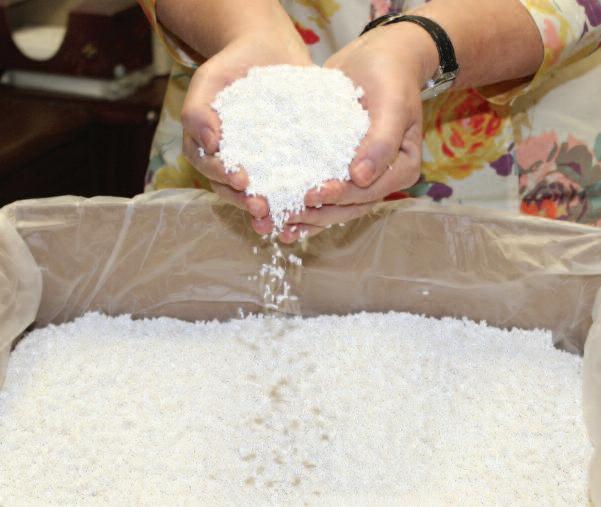
“With recycling, it’s often a matter of simply adding one additional step,” Blackston said. “You have to get buy-in from your associates to take that extra step – to put the recyclable item in the proper container. The time and the cost are negligible, but the benefits are huge.”
The total recycling of waste at Burnsville Plant is part of a much larger initiative within the facility and for all Glen Raven facilities to recycle, reduce energy consumption, limit the carbon footprint, enhance working conditions and protect the environment. For example, Burnsville Plant recently replaced lighting in manufacturing areas, resulting in significant cost reduction and improved working conditions.
“Glen Raven was a green company back when green was just a color,” Blackston said. “We know that we are smart enough and innovative enough to recycle our wastes rather than spreading them out on this beautiful earth we’ve been given.”




